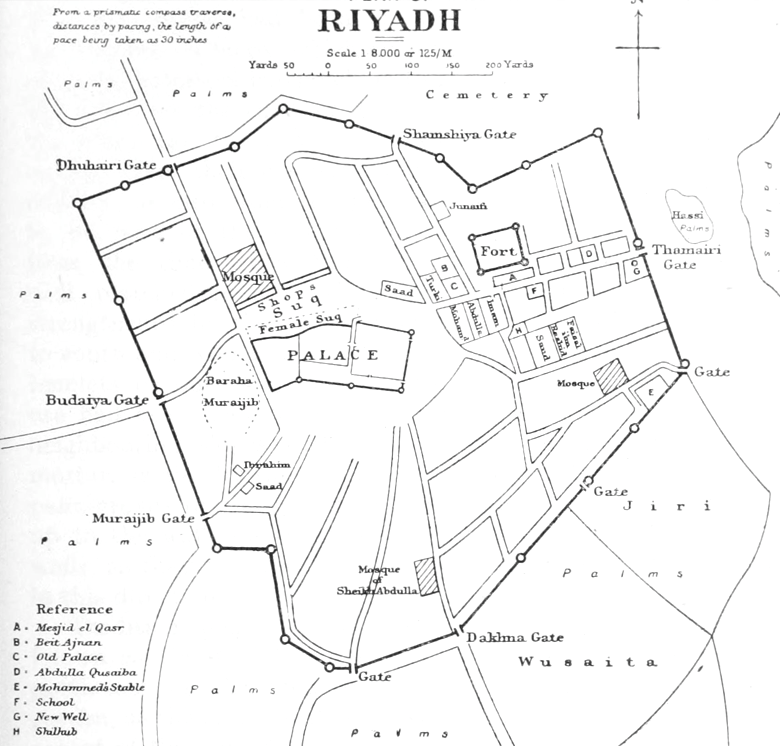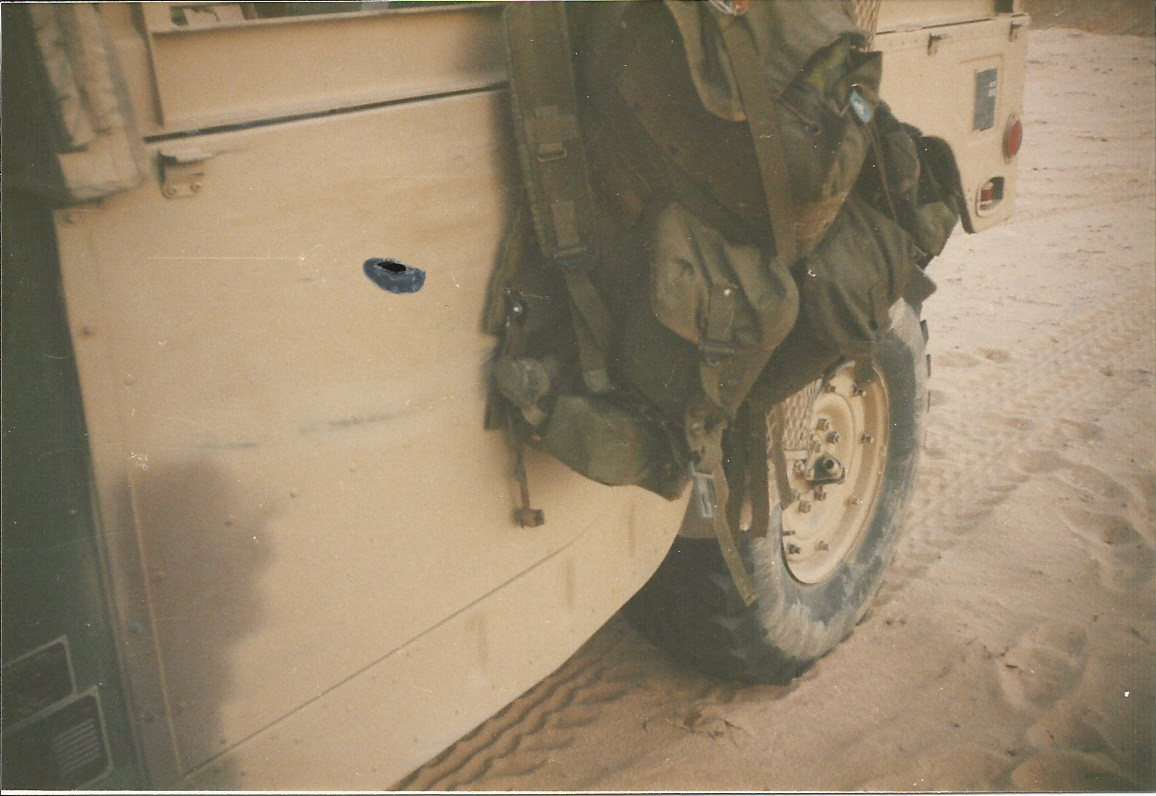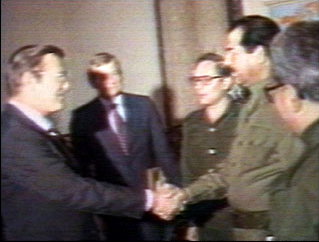|
Kuwait–Saudi Arabia Relations
In the aftermath of World War I, King Ibn Saud wanted to annex Kuwait and absorb it into Saudi Arabia. Border conflicts were fought in 1919–1920, in which the Kuwaitis successfully fought off Ibn Saud's forces with British assistance. Following the war, the Saudis imposed a trade blockade on Kuwait from 1923 until 1937, which heavily impacted the Kuwaiti economy. The goal of the Saudi pressure was to annex as much Kuwaiti territory as possible. At the Uqair conference of 1922 which was convened to decide on the borders between some of the newly formed Arab states, Ibn Saud succeeded in persuading British diplomat Sir Percy Cox, the high commissioner in Iraq, to give the Saudis two-thirds of Kuwaiti territory. There were no Kuwaiti representatives at the conference. This event set Kuwait's modern boundaries. Both Kuwait and Saudi Arabia are members of the Gulf Cooperation Council. Historically, there was a Saudi–Kuwaiti neutral zone inhabited by coastal fishermen; however, ... [...More Info...] [...Related Items...] OR: [Wikipedia] [Google] [Baidu] |
World War I
World War I or the First World War (28 July 1914 – 11 November 1918), also known as the Great War, was a World war, global conflict between two coalitions: the Allies of World War I, Allies (or Entente) and the Central Powers. Fighting took place mainly in European theatre of World War I, Europe and the Middle Eastern theatre of World War I, Middle East, as well as in parts of African theatre of World War I, Africa and the Asian and Pacific theatre of World War I, Asia-Pacific, and in Europe was characterised by trench warfare; the widespread use of Artillery of World War I, artillery, machine guns, and Chemical weapons in World War I, chemical weapons (gas); and the introductions of Tanks in World War I, tanks and Aviation in World War I, aircraft. World War I was one of the List of wars by death toll, deadliest conflicts in history, resulting in an estimated World War I casualties, 10 million military dead and more than 20 million wounded, plus some 10 million civilian de ... [...More Info...] [...Related Items...] OR: [Wikipedia] [Google] [Baidu] |
Coalition Of The Gulf War
On 29 November 1990, the adoption of United Nations Security Council Resolution 678 authorized the assembly of a multinational military coalition to liberate Iraqi invasion of Kuwait, Iraqi-occupied Kuwait by "all necessary means" if Iraq did not withdraw its forces by 15 January 1991. Iraq failed to do so, and the coalition began Gulf War air campaign, an aerial bombardment against targets in Iraq and Kuwait on 17 January 1991. At this time, the coalition consisted of 42 countries and was spearheaded by the United States. The central command was led by the United States, Saudi Arabia, and the United Kingdom; the marine command was led by the United States; the Joint Forces East Command was led by Egypt, Saudi Arabia, Syria, Morocco, Kuwait, Oman, the United Arab Emirates, Qatar, Bahrain, Poland, and Czechoslovakia; and the Joint Forces North Command was led by the United States, the United Kingdom, France, Canada, Italy, Australia, and Turkey. On 23 February 1991, the aerial bomb ... [...More Info...] [...Related Items...] OR: [Wikipedia] [Google] [Baidu] |
Kuwait–Saudi Arabia Relations
In the aftermath of World War I, King Ibn Saud wanted to annex Kuwait and absorb it into Saudi Arabia. Border conflicts were fought in 1919–1920, in which the Kuwaitis successfully fought off Ibn Saud's forces with British assistance. Following the war, the Saudis imposed a trade blockade on Kuwait from 1923 until 1937, which heavily impacted the Kuwaiti economy. The goal of the Saudi pressure was to annex as much Kuwaiti territory as possible. At the Uqair conference of 1922 which was convened to decide on the borders between some of the newly formed Arab states, Ibn Saud succeeded in persuading British diplomat Sir Percy Cox, the high commissioner in Iraq, to give the Saudis two-thirds of Kuwaiti territory. There were no Kuwaiti representatives at the conference. This event set Kuwait's modern boundaries. Both Kuwait and Saudi Arabia are members of the Gulf Cooperation Council. Historically, there was a Saudi–Kuwaiti neutral zone inhabited by coastal fishermen; however, ... [...More Info...] [...Related Items...] OR: [Wikipedia] [Google] [Baidu] |
Kuwait–Saudi Arabia Border
The Kuwait–Saudi Arabia border is 221 km (137 mi) in length and runs from the tripoint with Iraq in the west to the Persian Gulf coast in the east. Description The border starts in the west at the tripoint with Iraq on the Wadi al-Batin; a straight line of 90 km (55 mi), angled slightly to the south-east, then proceeds eastwards. The border then turns southwards via a series of irregular lines, before turning sharply to the east, with a straight line of 70 km (43 mi) running to the Gulf coast. History Historically there was no clearly defined boundary in this part of the Arabian peninsula; at the start of the 20th century the Ottoman Empire controlled what is now Iraq and United Kingdom, Britain controlled Kuwait as a Anglo-Kuwaiti Agreement of 1899, protectorate, with the interior consisting of loosely organised Arab groupings, occasionally forming emirates, most prominent of which was the Emirate of Nejd and Hasa ruled by the al-Saud family.Madawi Al-Rasheed. ' ... [...More Info...] [...Related Items...] OR: [Wikipedia] [Google] [Baidu] |
Foreign Relations Of Saudi Arabia
Foreign relations of Saudi Arabia are the diplomatic and trade relations between Saudi Arabia and other countries around the world. The foreign policy of Saudi Arabia is focused on co-operation with the oil-exporting Arab states of the Persian Gulf, Gulf States, the unity of the Arab World, Ummah, Islamic solidarity, and support for the United Nations. In practice, the main concerns in recent years have been Saudi Arabia–United States relations, relations with the US, the Saudi Arabian–led intervention in Yemen, the Israeli–Palestinian conflict, Iraq, the perceived threat from the History of the Islamic Republic of Iran, Islamic Republic of Iran, and the Price of petroleum, effect of oil pricing. Saudi Arabia contributes large amounts of development aid to Muslims, Muslim countries. From 1986 to 2006, the country donated £49 billion in aid. [...More Info...] [...Related Items...] OR: [Wikipedia] [Google] [Baidu] |
Foreign Relations Of Kuwait
Since its independence in 1961, Kuwait has maintained strong international relations with most countries, especially nations within the Arab world. Its vast oil reserves give it a prominent voice at the global economic forums and organizations like the OPEC. Kuwait is also a major ally of Association of Southeast Asian Nations, ASEAN, a regional ally of China, and a major non-NATO ally of the United States. International disputes In November 1994, Iraq formally accepted the UN-demarcated border with Kuwait which had been spelled out in Security Council Resolutions United Nations Security Council Resolution 687, 687 (1991), United Nations Security Council Resolution 773, 773 (1992), and 883 (1993); this formally ends earlier claims to Kuwait and to Bubiyan Island, Bubiyan and Warbah Island islands; ownership of Qaruh and Umm al Maradim islands are disputed by Saudi Arabia. Kuwait and Saudi Arabia continue to negatotiate a joint maritime boundary with Iran; no maritime boundary exis ... [...More Info...] [...Related Items...] OR: [Wikipedia] [Google] [Baidu] |
Kuwait City
Kuwait City (; ) is the capital and largest city of Kuwait. Located at the heart of the country on the south shore of Kuwait Bay on the Persian Gulf, it is the political, cultural and economic center of the emirate, containing Kuwait's Seif Palace, government offices, and the headquarters of most Kuwaiti corporations and banks. the metropolitan area had roughly three million inhabitants (more than 70% of the country's population). The city itself has no administrative status. All six Governorates of Kuwait, governorates of the country comprise parts of the urban area, urban agglomeration, which is subdivided into numerous Areas of Kuwait, areas. In a narrower sense, ''Kuwait City'' can also refer only to the town's historic core, which nowadays is part of the Capital Governorate (Kuwait), Capital Governorate and seamlessly merges with the adjacent urban areas. Kuwait City's trade and transportation needs are served by Kuwait International Airport, Shuwaikh, Mina Al-Shuwaik (Sh ... [...More Info...] [...Related Items...] OR: [Wikipedia] [Google] [Baidu] |
Riyadh
Riyadh is the capital and largest city of Saudi Arabia. It is also the capital of the Riyadh Province and the centre of the Riyadh Governorate. Located on the eastern bank of Wadi Hanifa, the current form of the metropolis largely emerged in the 1950s as an offshoot of the 18th century Walled town of Riyadh, walled town following the dismantling of its Riyadh city fortifications, defensive fortifications. It is the List of Arabian cities by population, largest city on the Arabian Peninsula, and is situated in the center of the An Nafud, an-Nafud desert, on the eastern part of the Najd plateau. The city sits at an average of above sea level, and receives around 5 million Tourism in Saudi Arabia, tourists each year, making it the List of cities by international visitors, forty-ninth most visited city in the world and the 6th in the Middle East. Riyadh had a population of 7.0 million people in 2022, making it the List of cities in Saudi Arabia, most-populous city in Saudi Arabia, ... [...More Info...] [...Related Items...] OR: [Wikipedia] [Google] [Baidu] |
Battle Of Khafji
The Battle of Khafji was the first major ground engagement of the Gulf War. It took place in and around the Saudi Arabian city of Khafji, from 29 January to 1 February 1991. Iraqi leader Saddam Hussein, who had already tried and failed to draw Coalition forces into costly ground engagements by shelling Saudi Arabian positions and oil storage tanks and firing Scud surface-to-surface missiles at Israel, ordered the invasion of Saudi Arabia from southern Kuwait. The 1st and 5th Mechanized Divisions and 3rd Armored Division were ordered to conduct a multi-pronged invasion toward Khafji, engaging Saudi Arabian, Kuwaiti, and U.S. forces along the coastline, with a supporting Iraqi commando force ordered to infiltrate further south by sea and harass the Coalition's rear. These three divisions, which had suffered significant losses from attacks by Coalition aircraft in the preceding days, attacked on 29 January. Most of their attacks were repulsed by U.S. Marine Corps and U.S. A ... [...More Info...] [...Related Items...] OR: [Wikipedia] [Google] [Baidu] |
Gulf War
, combatant2 = , commander1 = , commander2 = , strength1 = Over 950,000 soldiers3,113 tanks1,800 aircraft2,200 artillery systems , page = https://www.govinfo.gov/content/pkg/GAOREPORTS-PEMD-96-10/pdf/GAOREPORTS-PEMD-96-10.pdf , strength2 = 1,000,000+ soldiers (~600,000 in Kuwait)5,500 tanks700+ aircraft3,000 artillery systems , casualties1 = Total:13,488 Coalition:292 killed (147 killed by enemy action, 145 non-hostile deaths)776 wounded (467 wounded in action)31 tanks destroyed/disabled28 Bradley IFVs destroyed/damaged1 M113 APC destroyed2 British Warrior APCs destroyed1 artillery piece destroyed75 aircraft destroyedKuwait:420 killed 12,000 captured ≈200 tanks destroyed/captured 850+ other armored vehicles destroyed/captured 57 aircraft lost 8 aircraft captured (Mirage F1s) 17 ships sunk, 6 captured. Acig.org. Retrieved on 12 June 2011 , casualties2 = Total:175,000–300,000+ Iraqi:20,000–50,000 killed ... [...More Info...] [...Related Items...] OR: [Wikipedia] [Google] [Baidu] |
Invasion Of Kuwait
The Iraqi invasion of Kuwait, codenamed Project 17, began on 2 August 1990 and marked the beginning of the Gulf War. After defeating the Kuwait, State of Kuwait on 4 August 1990, Ba'athist Iraq, Iraq went on to militarily occupy the country for the next seven months. The invasion was condemned internationally, and the United Nations Security Council (UNSC) adopted numerous resolutions urging Iraq to withdraw from Kuwaiti territory. The Iraqi military, however, continued to occupy Kuwait and defied all orders by the UNSC. After initially establishing the "Republic of Kuwait" as a puppet state, Iraq annexed the entire country on 28 August 1990; northern Kuwait became the Saddamiyat al-Mitla' District and was merged into the existing Basra Governorate, while southern Kuwait was carved out as the all-new Kuwait Governorate. By November 1990, the adoption of United Nations Security Council Resolution 678, UNSC Resolution 678 officially issued Iraq an ultimatum to withdraw uncondition ... [...More Info...] [...Related Items...] OR: [Wikipedia] [Google] [Baidu] |
Ibn Saud
Abdulaziz bin Abdul Rahman Al Saud (; 15 January 1875Ibn Saud's birth year has been a source of debate. It is generally accepted as 1876, although a few sources give it as 1880. According to British author Robert Lacey's book ''The Kingdom'', a leading Saudi historian found records that show Ibn Saud in 1891 greeting an important tribal delegation. The historian reasoned that a 10 or 11-year-old child (as given by the 1880 birth date) would have been too young to be allowed to greet such a delegation, while an adolescent of 15 or 16 (as given by the 1876 date) would likely have been allowed. When Lacey interviewed one of Ibn Saud's sons prior to writing the book, the son recalled that his father often laughed at records showing his birth date to be 1880. Ibn Saud's response to such records was reportedly that "I swallowed four years of my life." p. 561" – 9 November 1953), known in the Western world as Ibn Saud (; ''Ibn Suʿūd''),''Ibn Saud'', meaning "son of Saud" (see Arabi ... [...More Info...] [...Related Items...] OR: [Wikipedia] [Google] [Baidu] |





